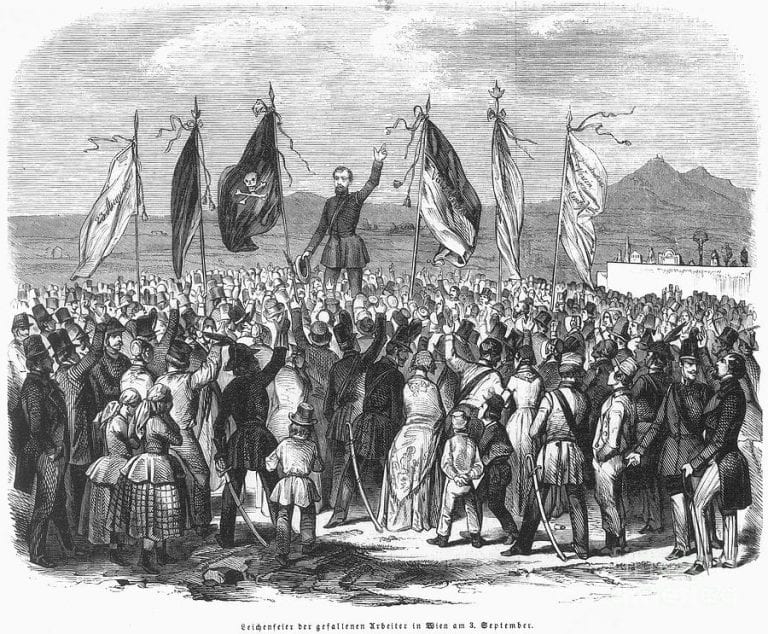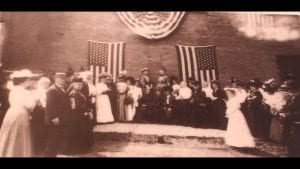Emperor Ferdinand and his chief advisor Metternich directed troops to crush the demonstration. Peaceful student demonstrators were shot and killed causing the working class to join the demonstrations, developing an armed insurrection demanding Metternich’s resignation. Ferdinand reluctantly complied and dismissed him, and tried to appease the people with a cleverly written constitution, but they rejected it. He later issued two manifestos which gave concessions to the people, but demonstrations continued until August 23 when Austrian troops opened fire on unarmed demonstrators.
University students mounted a large street demonstration in Vienna, and it was covered by the press across the German-speaking states. Following the important, but relatively minor, demonstrations against Lola Montez in Bavaria on February 9, 1848 (see below), the first major revolt of 1848 in German lands occurred in Vienna on March 13, 1848. The demonstrating students in Vienna had been restive and were encouraged by a sermon of Anton Füster, a liberal priest, on Sunday, March 12, 1848 in their university chapel. The student demonstrators demanded a constitution and a constituent assembly elected by universal male suffrage.
Emperor Ferdinand and his chief advisor Metternich directed troops to crush the demonstration. When demonstrators moved to the streets near the palace, the troops fired on the students, killing several. The new working class of Vienna joined the student demonstrations, developing an armed insurrection. The Diet of Lower Austria demanded Metternich’s resignation. With no forces rallying to Metternich’s defense, Ferdinand reluctantly complied and dismissed him. The former chancellor went into exile in London.
Ferdinand appointed new, nominally liberal, ministers. The Austrian government drafted a constitution in late April 1848. The people rejected this, as the majority was denied the right to vote. The citizens of Vienna returned to the streets from May 26 through 27, 1848, erecting barricades to prepare for an army offense. Ferdinand and his family fled to Innsbruck, where they spent the next few months surrounded by the loyal peasantry of the Tyrol. Ferdinand issued two manifestos on May 16, 1848 and June 3, 1848, which gave concessions to the people. He converted the Imperial Diet into a Constituent Assembly to be elected by the people. Other concessions were less substantial, and generally addressed the reorganizing and unification of Germany.
Ferdinand returned to Vienna from Innsbruck on August 12, 1848. Soon after his return, the working-class populace hit the streets again on August 21, 1848 to protest high unemployment and the government’s decree to reduce wages. On August 23, 1848, Austrian troops opened fire on unarmed demonstrators and shot several.
In late September 1848, Emperor Ferdinand, who was also King Ferdinand V of Hungary, decided to send Austrian and Croatian troops to Hungary to crush a democratic rebellion there. On September 29, 1848 the Austrian troops were defeated by the Hungarian revolutionary forces. On October 6 through 7, 1848, the citizens of Vienna had demonstrated against the emperor’s actions against forces in Hungary. As a result, Emperor Ferdinand I fled Vienna on October 7, 1848, taking up residence in the fortress town of Olomouc in Moravia, in the eastern empire. On December 2, 1848, Ferdinand abdicated in favour of his nephew Franz Joseph.



